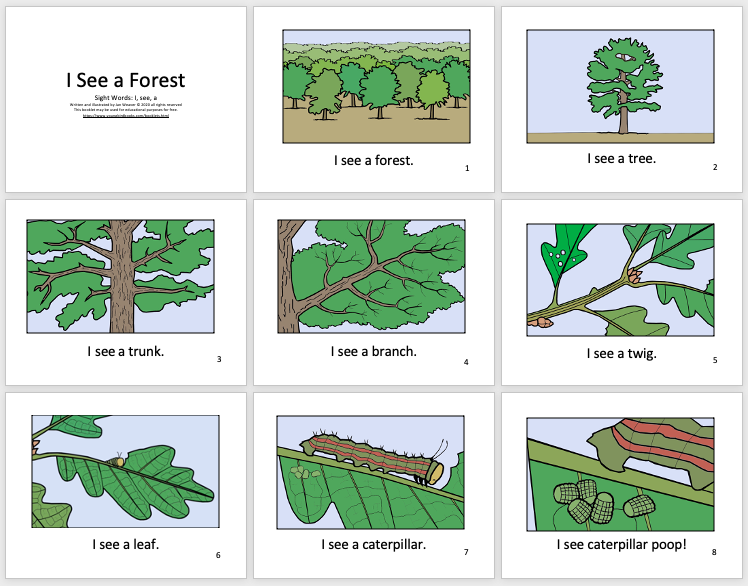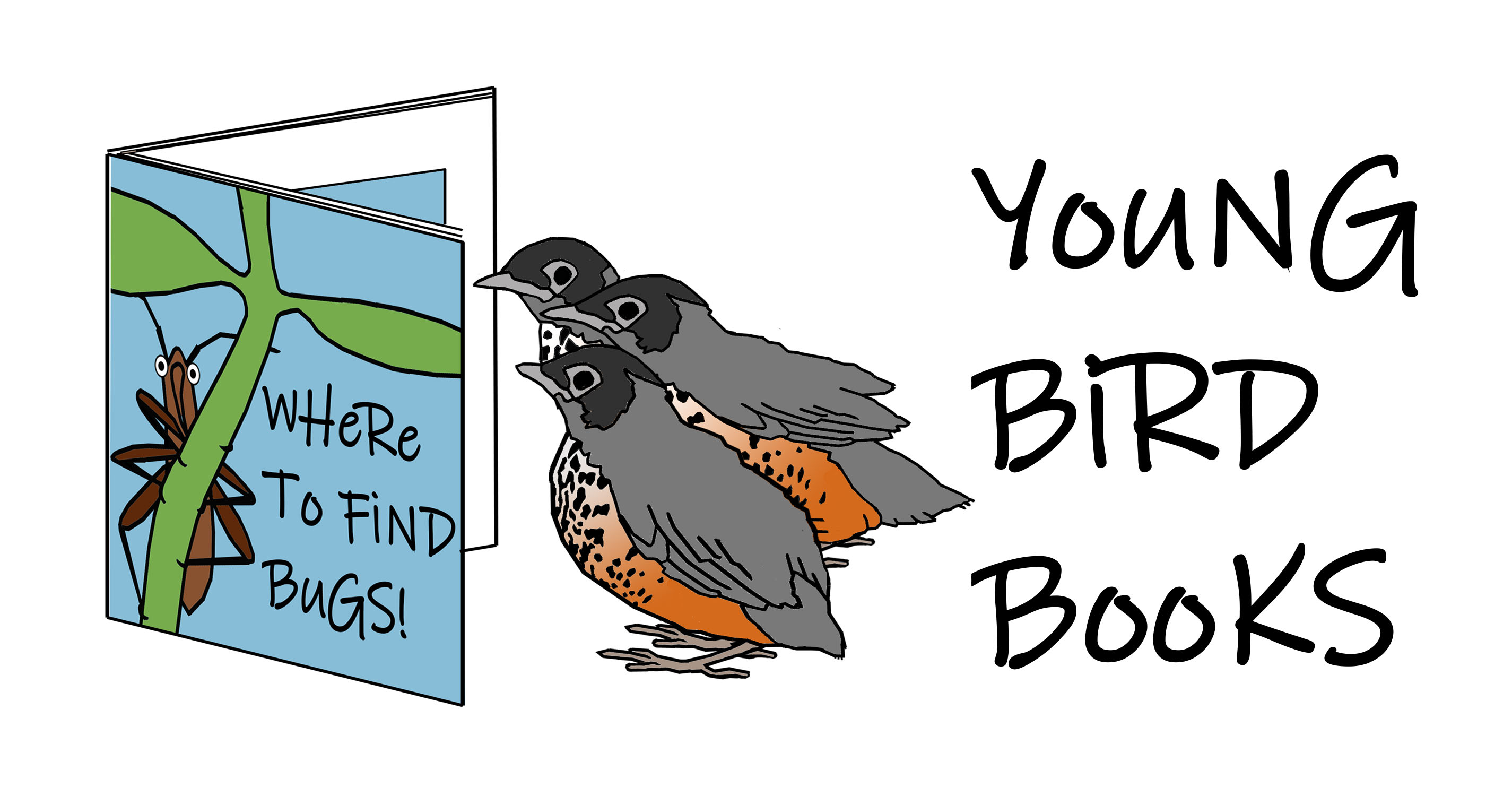I See a Forest

I See a Forest PDF Black and White (line drawings, 4 pages to a sheet)
I See a Forest PDF Color (colored-in drawings, 1 page to a sheet)
Sight Words: I, see, a
Did you notice that the story zoomed from a forest down to caterpillar poop? The scale of observation went from miles to inches (or km to cm). A one-mile forest measured in inches would be 60,000 inches. A ¼ inch poop measured in miles would be 1/253,440 of a mile.
Did you notice there are more small things than big things? If there are 10 caterpillars per branch, 100 branches per tree, and 1000 trees in the forest, that makes one million caterpillars in the forest!
Did you notice that the tree divided into branches, then into twigs, leaves, and finally into veins in the leaves? An arrangement where things keep dividing is called a branching pattern. Branching patterns are for things that flow from one place to another. The branching pattern of a tree helps water get from the roots up to the leaves and it helps sugar get from the leaves down to the roots.
What else did you notice?
NGSS Science Standard Learn more about the NGSS Science Standards
- DCI LS1.C: Organization for Matter and Energy Flow in Organisms - All animals need food in order to live and grow. They obtain their food from plants or from other animals. Plants need water and light to live and grow. - Plants distribute water and food using the branching pattern. Caterpillars and other animals eat the leaves to get energy and water.
- SEP 1: Use observations (firsthand or from media) to describe patterns in the natural world in order to answer scientific questions
- CCC 2: Patterns in the natural and human designed world can be observed and used as evidence
